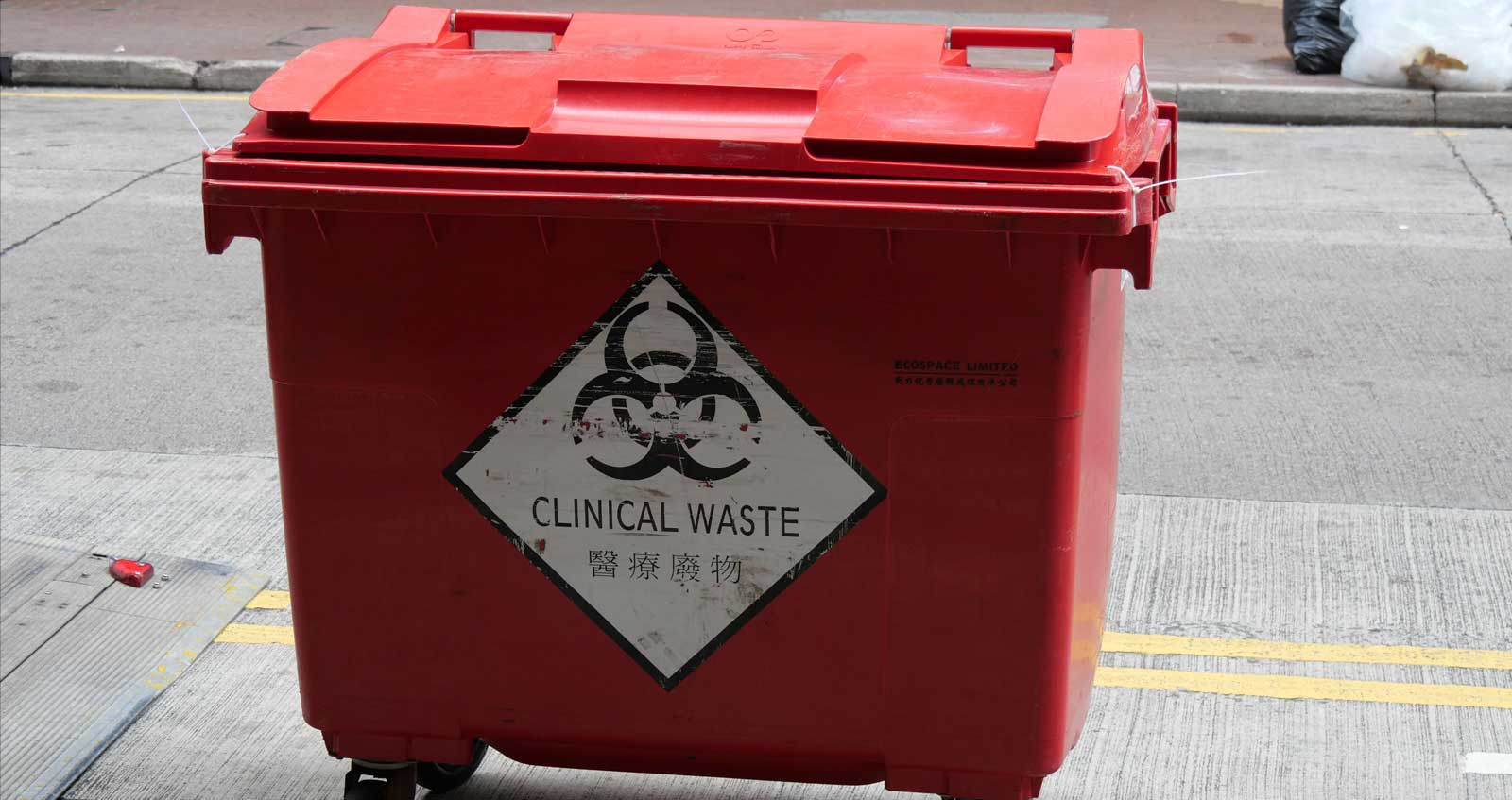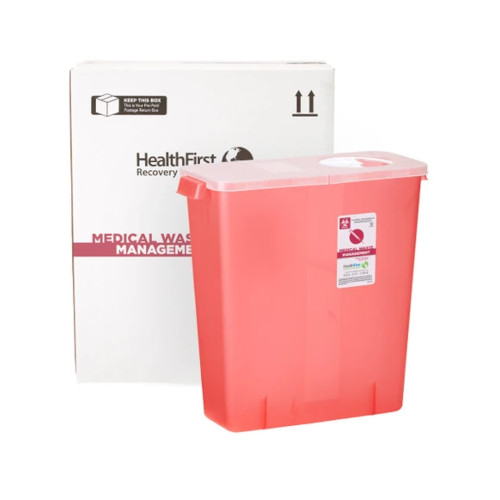Safe and Secure: The Clear-cut Selection for Specialist Medical Waste Removal Provider
Safe and Secure: The Clear-cut Selection for Specialist Medical Waste Removal Provider
Blog Article
Comprehending the Various Types of Waste Disposal Techniques
In the world of waste administration, the array of disposal techniques available today is huge and differed, each technique offering a distinct function in addressing the difficulty of waste disposal. click here. From reusing methods that intend to give new life to materials, to the detailed processes of harmful waste management, the landscape of garbage disposal is complex yet crucial for environmental sustainability. Understanding the nuances of these various strategies not only clarifies the relevance of liable waste monitoring but likewise motivates us to rethink our method in the direction of waste disposal in a rapidly evolving world

Recycling Techniques
Reusing methods are crucial for sustainable waste administration practices in both domestic and industrial setups. medical waste disposal. By carrying out efficient recycling strategies, a considerable quantity of waste can be diverted from landfills, saving natural deposits and reducing the ecological influence of production procedures
In suburbs, curbside recycling programs play an essential function in motivating households to different recyclable materials from general waste. Products such as paper, plastics, glass, and steels can be arranged and gathered for handling right into new items, minimizing the need for resources and energy-intensive production processes.
Industrial facilities likewise depend on reusing methods to minimize waste generation and promote a circular economic situation. By executing closed-loop systems, companies can reuse products within their manufacturing processes, minimizing prices and environmental footprint. medical waste removal. Additionally, commercial recycling programs often include partnerships with specialized recycling facilities to ensure that materials are effectively arranged, processed, and rehabilitated into the supply chain
Composting Methods

Aerated static pile composting includes mixing natural waste products in a huge pile and frequently turning it to make sure proper oygenation. This technique is fit for smaller-scale procedures and families.
In-vessel composting includes positioning organic waste in a closed container with regulated problems for temperature level and aeration. Windrow composting includes forming long rows of natural waste and consistently transforming them to advertise decay - medical waste removal service.
Garbage Dump Disposal
Land fill disposal is a generally made use of technique for handling waste that can not be recycled or composted. Methane gas, a result of decaying organic waste in garbage dumps, is typically gathered and used as these details a resource of sustainable energy. Initiatives to minimize reliance on landfills consist of advertising waste reduction, reusing, and checking out alternative waste disposal approaches to lessen the ecological footprint associated with typical garbage dump disposal practices.

Waste-to-Energy Incineration
Incineration of waste for energy generation is a technique significantly being considered as an option to typical landfill disposal techniques. Waste-to-energy incineration includes the burning of waste materials at heats, normally in specialized centers designed to generate electrical energy or warmth via the process - click here. This strategy not just decreases the quantity of waste that would certainly or else be destined for landfills however likewise harnesses the heat created throughout incineration to develop power
One of the essential advantages of waste-to-energy incineration is its capability to create electrical power while lessening the ecological influence contrasted to conventional landfill disposal methods. By converting waste into energy, this approach aids in lowering greenhouse gas exhausts and dependence on nonrenewable fuel sources for energy generation. Additionally, waste-to-energy facilities are geared up with sophisticated air pollution control innovations to alleviate prospective ecological toxins launched throughout the burning process.
Hazardous Waste Administration
.jpg)
Taking into consideration the critical significance of accountable waste management practices, particularly in the realm of environmental sustainability, the emphasis now shifts in the direction of the detailed domain name of Hazardous Waste Management. Contaminated materials postures considerable risks to both human wellness and the atmosphere, necessitating specialized handling and disposal strategies. Typical examples of unsafe waste include chemicals, batteries, chemicals, and digital waste.
Contaminated materials Monitoring includes the identification, collection, transport, therapy, and disposal of materials regarded potentially unsafe or damaging. This procedure needs adherence to stringent regulations and standards to mitigate negative impacts on ecological communities and public health and wellness. Numerous approaches are used in managing contaminated materials, including recycling, safe landfills, encapsulation, and chemical treatment.
Correct Hazardous Waste Administration is critical for stopping contamination of dirt, water sources, and air pollution. It is crucial for industries, labs, medical care facilities, and other generators of harmful waste to apply robust monitoring strategies, training programs, and emergency action intends to ensure the safe handling and disposal of these materials. Failure to handle contaminated materials properly can have significant effects, emphasizing the importance of accountable and attentive techniques in this area.
Conclusion
To conclude, garbage disposal techniques play a critical role in managing and minimizing the influence of waste on the environment. From recycling and composting to land fill disposal and waste-to-energy incineration, each approach has its very own advantages and constraints. Correct monitoring of hazardous waste is additionally necessary to safeguard public health and wellness and the atmosphere. It is essential for individuals and industries to recognize the various waste disposal methods readily available and pick one of the most proper technique for sustainable waste management.
In the realm of waste monitoring, the variety of disposal techniques available today is substantial and varied, each method offering a distinct objective in attending to the challenge of waste disposal. click here. From recycling techniques that aim to offer brand-new life to materials, to the intricate procedures of dangerous waste management, the landscape of waste disposal is intricate yet essential for environmental sustainability. Recognizing the nuances of these various methods not only loses light on the significance of responsible waste monitoring but also motivates us to reconsider our approach in the direction of waste disposal in a rapidly advancing world
Initiatives to decrease dependence on garbage dumps consist of advertising waste decrease, recycling, and checking out different waste disposal techniques to minimize the environmental impact connected with traditional landfill disposal methods.
It is important for industries and people to understand the different waste disposal strategies available and choose the most proper method for sustainable waste monitoring.
Report this page